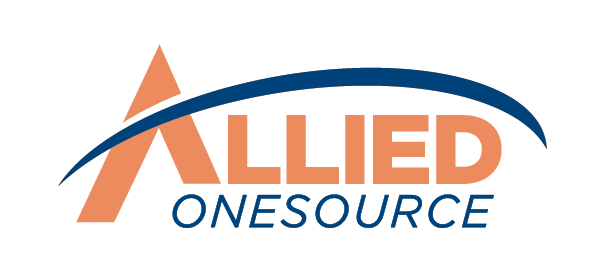The ROI of Remote & Hybrid Work: How Smart Workforce Planning Saves Millions
"What about all this office rent we're paying?"
This question echoes through boardrooms as executives consider remote and hybrid policies. While many companies implement stricter return-to-office mandates, with 75 percent of workers now required to be in the office a certain number of days per week compared to 63 percent in recent years, others follow a different path.
For example, companies like Spotify, Nvidia, and Zillow continue to support flexible work arrangements.¹ Their focus centers on results rather than location. For organizations still weighing whether remote or hybrid models fit their operations, research reveals a clear conclusion: flexible work represents more than a perk; it's a strategic business advantage.
The Hidden Costs of Office-Only Operations
Rigid in-office policies may cost businesses more than traditional budgets reveal. These hidden expenses impact productivity, retention, and overall performance.
These costs include:
Talent Flight to Flexible Competitors
Top employees have multiple career options, and many include flexible work arrangements. Research shows that 63 percent of workers are less likely to apply for positions without remote work options.² This reality shrinks talent pools when companies maintain office-only policies, forcing competition for fewer available candidates.
Existing employees may leave for competitors offering flexibility. When skilled professionals can maintain career growth while gaining work-life balance elsewhere, retention becomes challenging. Losing experienced team members means losing institutional knowledge and expertise, creating costs beyond replacement expenses.
Salary Premiums to Compete Without Flexibility
Companies unable to offer flexibility often need higher compensation to attract quality candidates. Organizations with rigid office requirements find themselves paying premium salaries to compete with flexible employers who offer similar roles at standard rates plus work-life benefits. This directly increases labor costs without improving productivity.
Organizations may also need expanded recruiting budgets. Without flexible work options, HR teams must work harder to convince candidates to join. This often requires additional recruitment efforts and higher signing bonuses to close agreements.
Turnover and Recruitment Costs
Office-only policies can drive employees to seek opportunities elsewhere, creating expensive recruitment and training cycles. Replacing employees involves significant costs, including recruiting, interviewing, onboarding, and training time. When employees leave specifically because companies won't offer flexible work, these costs could be avoided entirely by allowing remote or hybrid options.
High turnover creates additional problems. It disrupts team collaboration and can delay critical projects. New hires typically need several months to become fully productive, meaning current employees must handle extra work during transition periods. These factors compound costs from rigid workplace policies.
Commute-Related Productivity Drains
Long commutes take a toll on workforce performance. Employees dealing with traffic or transit delays don't arrive ready to work; they often need time to decompress and refocus. This recovery period reduces productive work time and can affect overall performance and engagement throughout the day.
Organizations also face reliability issues with commute-dependent staff during bad weather, transportation strikes, or vehicle problems. These disruptions lead to unplanned absences, potentially affecting project deadlines and client service. Remote and hybrid setups eliminate these reliability concerns because employees can maintain consistent productivity regardless of external transportation factors or weather conditions.
Why Remote and Hybrid Work Make Business Sense
Given these hidden costs and operational challenges, here’s why more companies embrace flexible work as a strategic business decision:
Direct Cost Savings
The most immediate impact of remote and hybrid work appears in cost structure improvements. Remote and hybrid setups can save over $11,000 per employee annually, even with part-time remote work.³ Savings come from reduced office space, lower utility bills, decreased maintenance, and fewer supply costs.
Office real estate is a major expense. With more employees working remotely, organizations can implement hot-desking, downsize space, or renegotiate leases. Companies also spend less on cleaning, security, and office supplies.
Measurable Productivity Gains
Remote and hybrid work policies boost productivity for most companies. Research shows that 61 percent of employees are more productive at home, while 34 percent maintain the same output levels.⁴ Only 5 percent see decreased productivity, meaning most workers perform equally well or better in flexible arrangements.
The reasons are straightforward. Without commutes and office distractions, people focus better and work during their most productive hours. Remote workers can also handle personal appointments, family needs, or household tasks during their day while meeting deadlines and deliverables. This flexibility means fewer formal time-off requests and more consistent team availability for important projects and client work.
Wider Talent Pool Access
Remote and hybrid work models remove geographic barriers. Organizations can hire the best candidates regardless of location, dramatically increasing talent pool size. This geographic flexibility proves especially valuable for specialized roles where local talent may be scarce or expensive.
Remote flexibility also attracts top candidates. It has become a key factor in job decisions and offering it can make companies more competitive in the hiring market. Additionally, organizations can often secure talented professionals at competitive salary rates since the flexibility itself serves as a valuable benefit that reduces compensation demands.
Employee Retention Benefits
Flexible work setups lead to higher employee satisfaction and improved retention. Gallup found that 76 percent of hybrid workers and 85 percent of fully remote workers cite better work-life balance as their biggest benefit.⁵ When people feel supported, they're less likely to leave, reducing time and money spent on hiring replacements.
These benefits build over time. Employees tend to stay loyal to companies that provide flexibility to manage both work and personal responsibilities. When they experience less stress and more control over their schedules, burnout decreases and team stability grows. This consistency improves company culture and reduces disruptions from constant turnover.
Business Continuity and Resilience
Remote work capabilities keep businesses operational during unexpected disruptions. Companies with remote setups can continue working during natural disasters, health crises, transportation strikes, or other events that force traditional offices to close. This helps protect revenue and client relationships while competitors might struggle to deliver services.
This flexibility also helps organizations adjust team size based on business needs. During busy periods, companies can quickly bring on remote contractors or temporary workers without worrying about office space constraints. During slower periods, they can reduce costs more easily than companies with long lease commitments. This adaptability provides financial flexibility that helps during both growth periods and economic downturns.
Ready to Unlock Remote and Hybrid Work ROI?
The numbers demonstrate clear value. Flexible work setups don't just save money; they help teams increase productivity, attract better talent, improve employee retention, and maintain adaptability during change. While organizations need to invest in project management and communication tools, the returns extend far beyond basic cost savings.
The critical question isn't whether companies can afford flexible work arrangements; it's whether they can afford not to implement them. Organizations that embrace flexible work early will attract top talent and maintain competitive advantages, while others may face rising costs and limited options.
Companies seeking to optimize their workforce strategy can benefit from understanding how remote and hybrid setups fit into comprehensive talent and growth planning. Strategic workforce optimization requires balancing flexibility with operational efficiency to achieve lasting results. Want to take your workforce strategy further?
Download our whitepaper, "Maximizing ROI through Strategic Workforce Optimization"
At Allied OneSource, we help companies rethink their approach to hiring, retention, and workforce planning to achieve sustainable results. For tailored support in building smarter, more cost-effective teams, contact us today.
References
- Braun, S. (2025, March 6). Companies like Spotify and Nvidia are standing by remote and hybrid work despite the latest RTO wave. These are the other companies committed to flexible schedules. Fortune. https://fortune.com/2025/03/06/companies-with-remote-hybrid-work-options-spotify-nvidia-zillow-pintrest-microsoft/
- Robinson, B. (2025, January 13). New research suggests remote jobs are best for company's bottom line. Forbes. https://www.forbes.com/sites/bryanrobinson/2025/01/13/new-research-suggests-remote-jobs-are-best-for-companys-bottom-line/
- Silvermann, B. (2025, June 2). Does working from home save companies money? Business.com. https://www.business.com/articles/working-from-home-save-money/
- Robinson, B. (2025, January 13). New research suggests remote jobs are best for company's bottom line. Forbes. https://www.forbes.com/sites/bryanrobinson/2025/01/13/new-research-suggests-remote-jobs-are-best-for-companys-bottom-line/
- Kemp, A. (2024, August 15). Employee wellbeing hinges on management, not work mode. Gallup. https://www.gallup.com/workplace/648500/employee-wellbeing-hinges-management-not-work-mode.aspx











